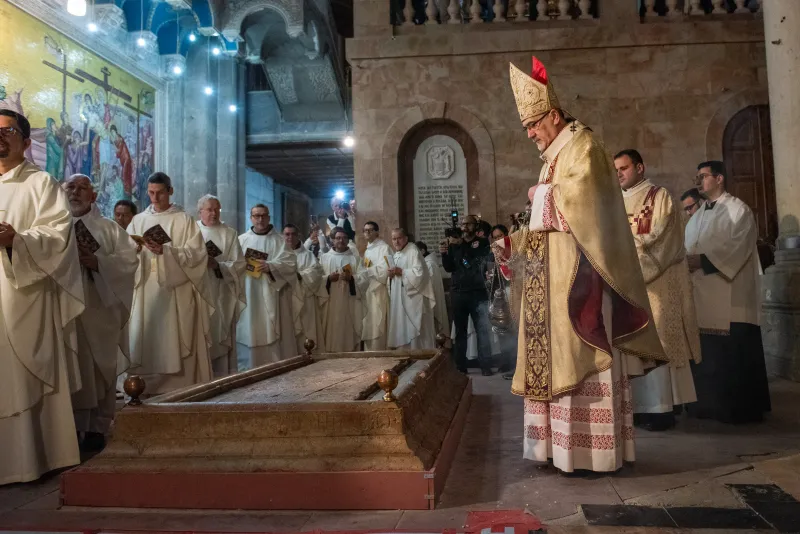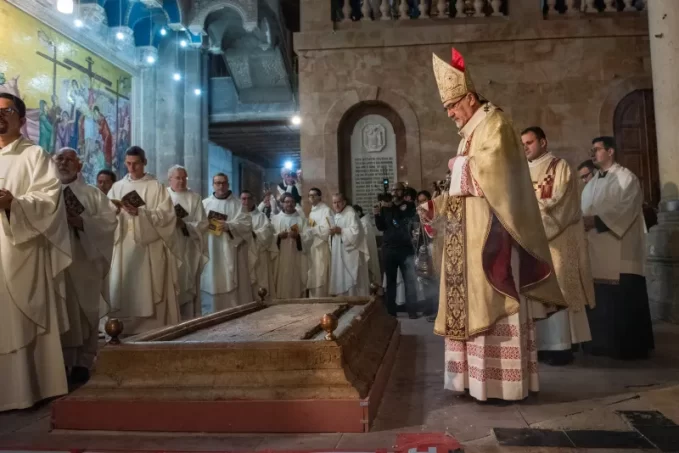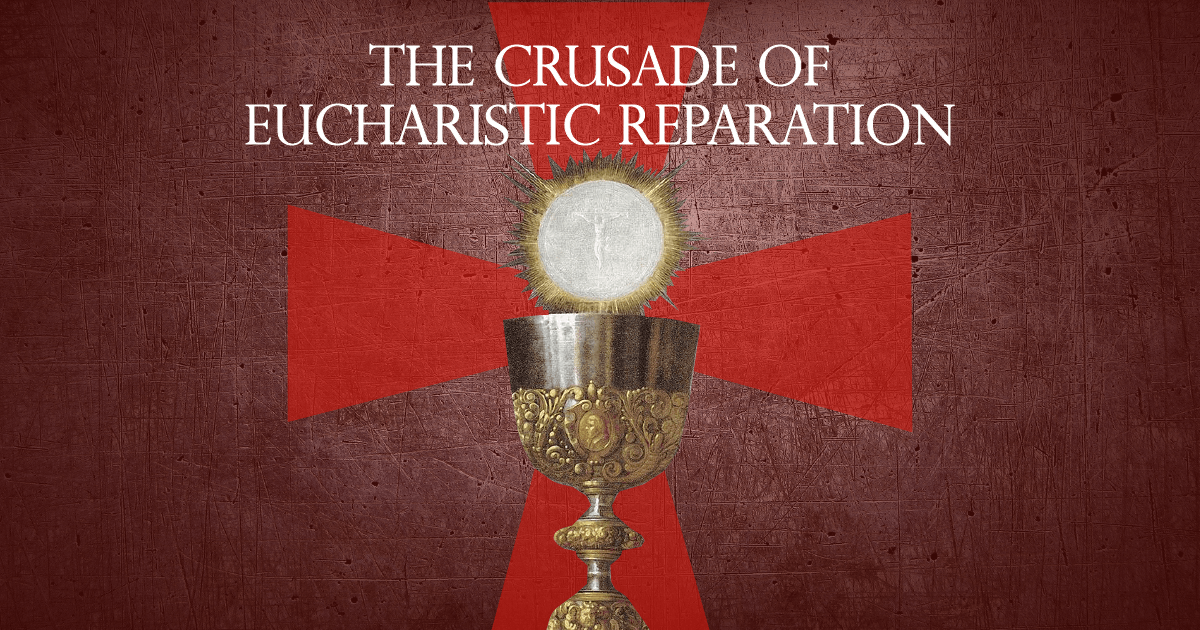‘The mother of all holy vigils’: Jerusalem basilica is first place to announce Easter
With the incense burned from the newly blessed fire, Cardinal Pierbattista Pizzaballa, the Latin patriarch of Jerusalem, incenses the “Stone of Anointing,” located at the entrance of the Basilica of the Holy Sepulcher, where, according to tradition, the body of Jesus was anointed and prepared with aromatic oils for burial. March 30, 2024. / Credit: […]



Jerusalem, Mar 31, 2024 / 09:45 am (CNA).
In the Basilica of the Holy Sepulcher, the church of the Lord’s Resurrection, due to reasons related to the Status Quo, the Easter Vigil is held on Saturday morning instead of at night. For this reason, it is also considered “the mother of all holy vigils.”
The solemn celebration was presided over by the Latin patriarch of Jerusalem, Cardinal Pierbattista Pizzaballa, in front of the edicule of the Holy Sepulcher, which encloses the tomb of Jesus.

“The liturgy of Jerusalem is built around this place, as is the liturgy of the whole Church. It is from here that we draw the light that enlightens the entirety of Christian life. We the Church of Jerusalem must be and want to be the first to announce the arrival of this light and to bring it to the world,” the patriarch said in his homily.
The celebration began in darkness at the entrance of the basilica, where the “lucernarium” rite took place. The patriarch blessed the new fire, which was used to burn incense in the incense burner, with which he incensed the basilica as he proceeded toward the edicule of the Holy Sepulcher.

Right in front of the edicule, using fire taken from one of the lamps inside, the Easter candle was lit along with the row of lamps burning in front of the edicule itself. The chanting of the Easter Prophecy (“Exultet”) before and the Gloria afterward, following the seven readings and seven psalms of the vigil that recount the history of salvation — together with the ringing of the bells — heralded Easter.
“Reverend Father, I announce to you a great joy, and that is ‘Alleluia!’” the deacon announced to the patriarch of the joy of Easter. Following these words, the Alleluia chant was sung three times.

From the sepulcher, new light arises. Here, according to an ancient tradition of Jerusalem linked to this place and this day, the patriarch himself proclaimed the Gospel of the Resurrection in front of the door of the edicule, at the very place where it occurred.
“Let us lift up our gaze!” the patriarch urged in his homily. “The evangelist tells us first of all that the women looked up (cf Mk 16:4). The expression means that something new has happened, something that did not depend on human strength. It means that God has made himself present. To see this wonder, man must look up.”
The basilica was notably empty, with a clear absence of pilgrims and Christians who usually come from the Palestinian Territories for the Easter festivities. The reference to the current situation emerged in the words of the patriarch: “The terrible days we are living seem to have annihilated our expectations, to have closed all roads and erased the future. … Everything around us seems to speak about the end, about death. But if only we looked up, perhaps we too, just like the women in today’s Gospel, would be able to see something new, something that is being fulfilled.”

“Jesus,” the patriarch added, “has unhinged the gates of the kingdom of death with the only weapon that death cannot resist, which is love. If we remain in love, we are no longer prisoners of death. If we love, we are free, we are risen.”
These words introduce the third moment of the liturgy of this day, which is the renewal of baptismal promises. On the north side of the edicule of the Holy Sepulcher, the patriarch blessed the water by immersing the Easter candle in a very evocative rite.

After blessing the priests and the faithful, the Mass continued with the Eucharistic liturgy, in which the faithful participated in the table prepared by the Lord himself through his death and resurrection.
“What I wish you all,” the patriarch said, “is to stop seeking among the dead he who is alive (cf Lk. 24:5)” but “like the women of the Gospel, may we have a renewed desire to look up. May today’s Easter be an invitation to set out, to seek the signs of his presence, which is a presence of life, love, and light.”

At the conclusion, following the solemn blessing, the patriarch extended Easter greetings and bid farewell to all those present.
If you value the news and views Catholic World Report provides, please consider donating to support our efforts. Your contribution will help us continue to make CWR available to all readers worldwide for free, without a subscription. Thank you for your generosity!
Click here for more information on donating to CWR. Click here to sign up for our newsletter.














